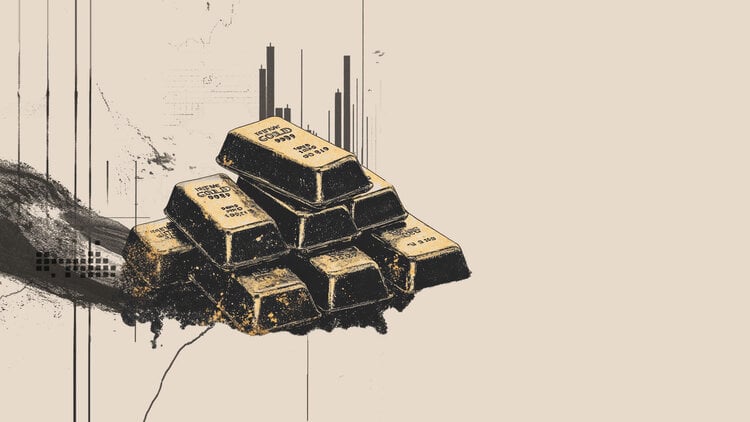- Indian rupee gains strength in Monday’s Asian session.
- Possible trade agreements between the US and India and the fall in oil prices support inr, but cross -border tensions could limit their increase.
- Traders wait for the ISM PMI report of the US ISM services, which will be published later on Monday.
Indian rupee (INR) gains ground on Monday. The positive developments around the commercial agreement between the US and India improve the feeling, supporting the Indian currency. In addition, the fall in crude oil prices elevates the INR, since India is the third largest oil consumer in the world.
However, the growing tensions between India and Pakistan could drag the local currency down. Pakistan’s army declared in a statement on Saturday that he had made a training launch of a “surface-surface missile with a range of 450 kilometers.” Nueva Delhi has accused Islamabad to support an attack on tourists in Kashmir last month.
Facing the future, the purchasing managers index (PMI) of the US ISM services will be the climax on Monday. The attention will focus on the decision on the interest rates of the Federal Reserve (FED) on Wednesday, which is expected to keep the rates without changes.
Indian rupee remains firm, backed by commercial conversations between the US and India and the fall in crude oil prices
- India currency reserves increased by 1,983 million dollars to reach 688,129 million dollars during the week that ended on April 25, marking the eighth consecutive weekly increase, according to the Indian Reserve Bank (RBI) on Friday.
- The RBI will buy bonds for a value of 750,000 million rupees (8,880 million dollars) this week, followed by two purchases more than 250,000 million rupees later in the month.
- Until now this year, he has bought bonds for a value of 3.65 billion rupees through OMOS and 388,000 million rupees in debt transactions in the secondary market. This unexpected liquidity injection will probably help the transmission of policies and to boost growth amid global uncertainties, said Radchika Rao, executive director and senior economist of DBS Bank.
- It is estimated that the Indian economy will grow at a constant rhythm of 6.6% in fiscal year 2025-26, according to Deloitte’s last forecast.
- The US Non -Agricultural Payroll (NFP) increased by 177,000 in April, according to the US Labor Statistics Office (BLS) on Friday. This figure followed the increase of 185,000 (reviewed since 228,000) observed in March and exceeded the 130,000 market consensus.
- The US unemployment rate remained unchanged at 4.2% in April, as expected. The average time profits were stable at 3.8% year -on -year in the same informed period. Finally, the participation rate of the workforce rose to 62.6% in April from 62.5% in March.
- The markets are now valuing almost 37% probabilities of a Fed cut in June, compared to 64% of a month ago. Goldman Sachs and Barclays both transferred their cutting forecasts to July since June.
The bassist bias of the USD/INR persists, the overene RSI requires caution
Indian rupee is strengthened in the day. The USD/INR pair maintains the bearish tone in the daily chart, with the price below the exponential mobile (EMA) average of 100 days. The 14 -day relative force (RSI) index moves below the 30.00 mark, indicating overall conditions. This suggests that greater consolidation or temporary recovery cannot be ruled out.
A decisive breakdown below the limit of the descending trend channel could take its gaze back to 84.22, the minimum of November 25, 2024. Any additional sale below the level mentioned could see the next level of containment in 84.08, the minimum of November 6, 2024.
On the contrary, the first objective to observe is 85.14, the minimum of April 23, followed by 85.70, the 100 -day EMA. A rupture above this area could indicate a possible reversal of trend and pave the way to 86.25, the upper limit of the trend channel.
India Faqs Rupia
Indian rupee (INR) is one of the most sensitive currencies to external factors. The price of crude oil (the country depends largely on imported oil), the value of the US dollar (most of the trade is carried out in US dollars) and the level of foreign investment are all influential factors. The direct intervention of the Bank of the Reserve of India (RBI) in the currency markets to keep the exchange rate stable, as well as the level of the interest rates set by the RBI, are other important factors that influence the rupee.
The Bank of the Reserve of India (RBI) actively intervenes in the currency markets to maintain a stable exchange rate and help facilitate trade. In addition, the RBI tries to maintain the inflation rate in its 4% target adjusting interest rates. Higher interest rates often strengthen rupee. This is due to the role of the “Carry Trade”, in which investors borrow in countries with lower interest rates to place their money in countries that offer relatively higher interest rates and benefit from difference.
Macroeconomic factors that influence the value of rupee include inflation, interest rates, economic growth rate (GDP), trade balance and foreign investment tickets. A higher growth rate can lead to greater investment abroad, increasing the demand for rupee. A less negative trade balance will eventually lead to a stronger rupee. The highest interest rates, especially real types (less inflation interest rates) are also positive for rupee. A risk environment can generate higher direct and indirect foreign investment entries (FI and FII), which also benefit the rupee.
Higher inflation, particularly if it is comparatively higher than other countries, is generally negative for the currency, since it reflects a devaluation through excess supply. Inflation also increases the cost of exports, which leads to more rupees to buy foreign imports, which is negative for Indian rupee. At the same time, higher inflation usually leads to the Bank of the Reserve of India (RBI) to raise interest rates and this can be positive for rupee, due to the increase in demand for international investors. The opposite effect applies to lower inflation.
Source: Fx Street
I am Joshua Winder, a senior-level journalist and editor at World Stock Market. I specialize in covering news related to the stock market and economic trends. With more than 8 years of experience in this field, I have become an expert in financial reporting.







